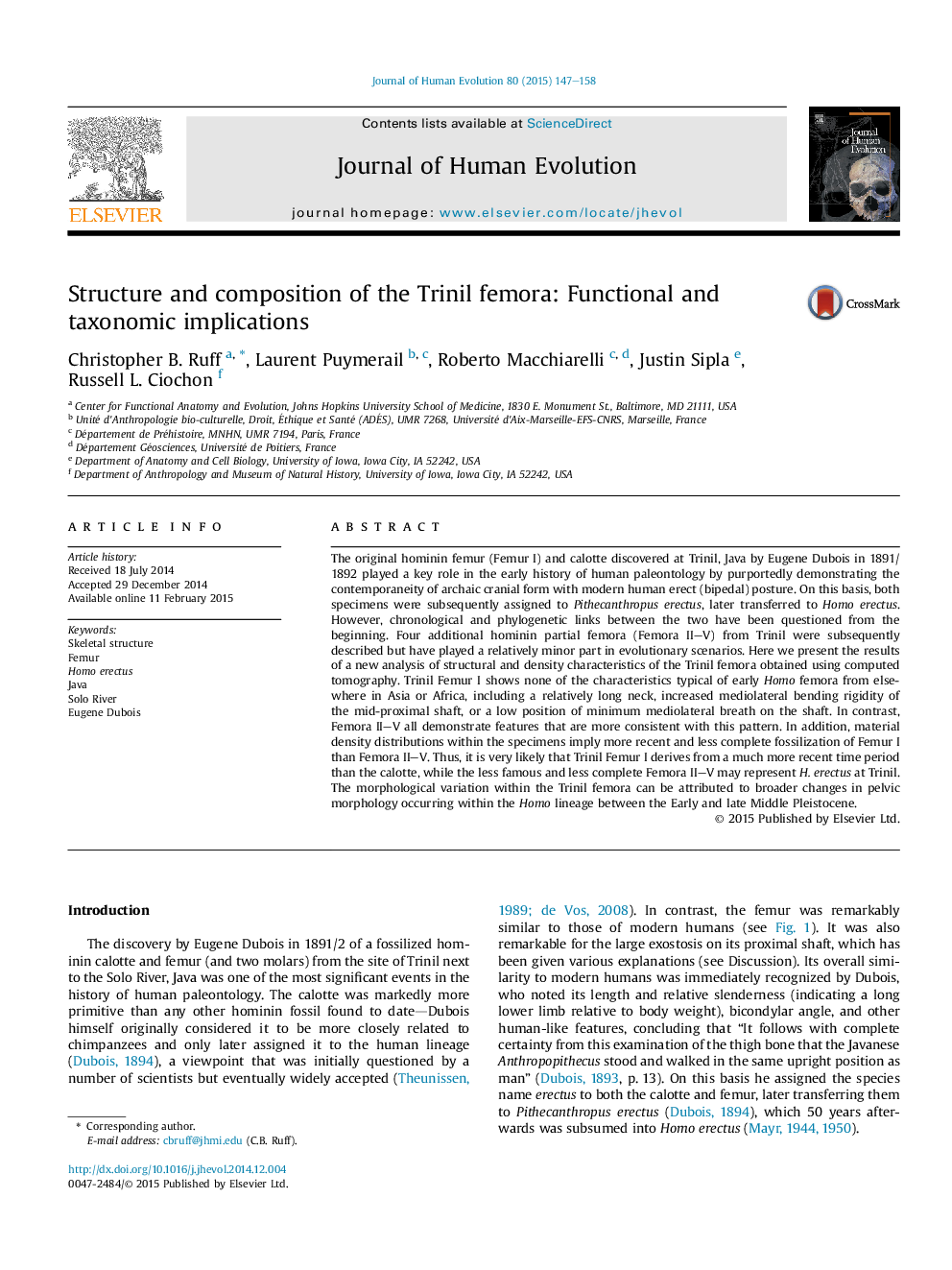| کد مقاله | کد نشریه | سال انتشار | مقاله انگلیسی | نسخه تمام متن |
|---|---|---|---|---|
| 4555932 | 1628169 | 2015 | 12 صفحه PDF | دانلود رایگان |

The original hominin femur (Femur I) and calotte discovered at Trinil, Java by Eugene Dubois in 1891/1892 played a key role in the early history of human paleontology by purportedly demonstrating the contemporaneity of archaic cranial form with modern human erect (bipedal) posture. On this basis, both specimens were subsequently assigned to Pithecanthropus erectus, later transferred to Homo erectus. However, chronological and phylogenetic links between the two have been questioned from the beginning. Four additional hominin partial femora (Femora II–V) from Trinil were subsequently described but have played a relatively minor part in evolutionary scenarios. Here we present the results of a new analysis of structural and density characteristics of the Trinil femora obtained using computed tomography. Trinil Femur I shows none of the characteristics typical of early Homo femora from elsewhere in Asia or Africa, including a relatively long neck, increased mediolateral bending rigidity of the mid-proximal shaft, or a low position of minimum mediolateral breath on the shaft. In contrast, Femora II–V all demonstrate features that are more consistent with this pattern. In addition, material density distributions within the specimens imply more recent and less complete fossilization of Femur I than Femora II–V. Thus, it is very likely that Trinil Femur I derives from a much more recent time period than the calotte, while the less famous and less complete Femora II–V may represent H. erectus at Trinil. The morphological variation within the Trinil femora can be attributed to broader changes in pelvic morphology occurring within the Homo lineage between the Early and late Middle Pleistocene.
Journal: Journal of Human Evolution - Volume 80, March 2015, Pages 147–158